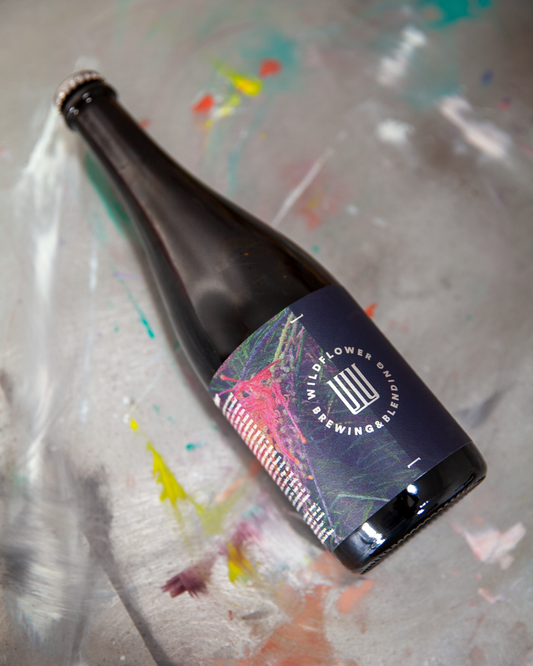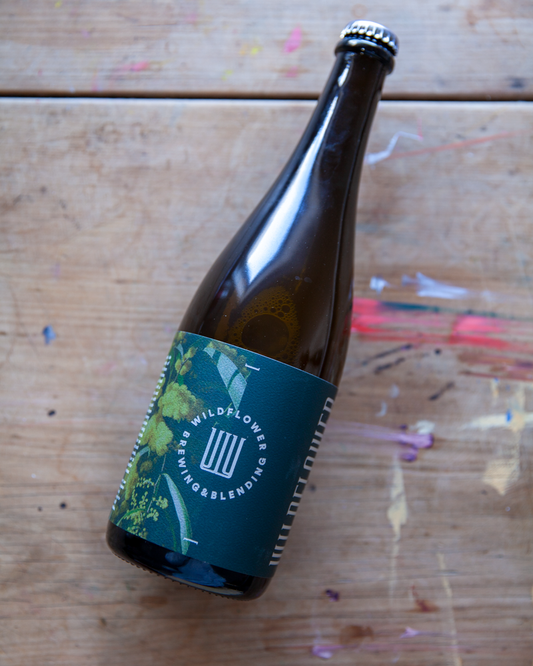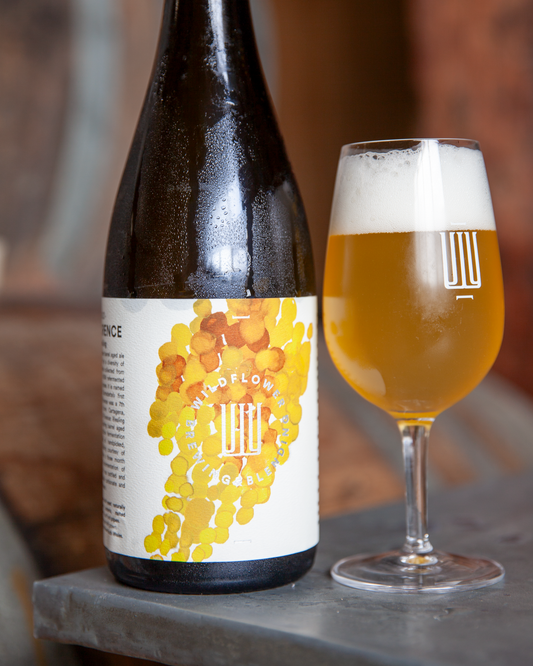When I designed and built our own brew kit in mid-2021, one of my main goals was to rid ourselves from any sort of process aids, making our wort with strictly only organic grains, hops, water and our house culture.
Brewers will know this presents challenges for the process with no salts (calcium chloride, calcium carbonate, calcium sulphate) to adjust our water profile, no acids (lactic, phosphoric) for water thus mash pH adjustments, no anti-foam (an inert polymer) to reduce foam during the boil, no wort coagulant (such as Irish moss or isinglass) for clarity, no yeast nutrient and no fermentation-stage clarifier (such as biofoam).
I’m happy to report that we achieved this endeavour soon after we began brewing on our own kit by either accepting the parameters our raw materials presented, slowing down the process or designing our kit to not need the aid (nutrient through boiling in copper and anti-foam due to a wide kettle).
However, the combination of Sydney water and our organic base malt naturally results in a mash pH that is slightly higher than ideal range for us. Without the use of urea (synthetic nitrogen fertiliser) and lime on the soils of Organically Greenwood, the natural malt pH is more basic than a conventionally grown barley.
Now, I’m not a huge stickler for the ‘rules’, maybe that’s not surprising… but a higher mash pH carries risks for us which might not present themselves to a monoculture brewer. For us a higher mash pH will also result in a higher wort pH meaning out wort at inoculation with our mixed house culture is less immune to a number of wort spoilers (enterobacter, pectinatus) leaving us open to more risky ferments.
Close watchers of lambic production methods may be aware of the practice of wort pre-acidification to a level at or under 4.5 before coolship cooling/inoculation. This is to bypass this risky wort pH range which produces the enterobacter phase of spontaneous beer fermentation. I am not going to weigh in on the argument as to whether skipping this phase affects/changes the flavour of the finished lambic/Gueuze or as to whether it is ‘traditional’ or not… only to highlight that although we are not using a coolship for wort inoculation for Wildflower beers (other than Village w @mountainculturebeerco which we do not pre-acidify our wort) a slow starting fermentation at higher wort pH’s (anything above 4.5, but normal wort pH is around 5.2) is also risky for us and can result in ferments that carry bacterial flavours/aromas which either do not age out or take many, many years to resolve.
So what do we do?! We were yielding wort pHs of 5.5 and mash pHs around 5.8+ for a while there which just added to our risk and I wanted to reduce… but with no process aids available to me (by choice [dogmatism?]) the options were limited.
First stop was to ask @voyager_craft_malt to attempt to make acidulated malt out of our organic base barley… we can’t just simply buy an off the shelf one as we are committed to organic, regen NSW grain. This is made by allowing the naturally occurring lactic acid producing bacteria on the grain to grow and acidify before kilning. This worked pretty well but we were unable to get the strength of acidity normally seen in conventional acidulated malt so we were using a lot as a % of our grain bill and thus decided to attempt another approach.
I believe I first learned of Sauergut 4 or 5 years back, a German, natural, Reinheitsgebot-approved alternative for mash pH adjustment, from Pete at @garageproject, but equality could have been of Aussie/British brewer Alex Troncoso’s setup in Bristol @lostandgroundedbrewers. As I’ve never been trained in German brewing technique it was unfamiliar to me but I immediately liked the solution, and wanted to employ the technique or something similar to Wildflower to help with our mash pH.
The sauergut process, probably best self-researched, essentially works by having a continuous lactic acid bacteria-tank that is fed with fresh wort each brew day and equally pulled from each brew day during the mash… the wort feeds the warm microbes, dropping pH in the unfermented beer and then this sour wort is proportionally added to a mash to drop pH.
Now, we have our hands on plenty of souring bacteria (from our culture)… but keeping a system like this in your brewery requires a specific tank that can be kept warm (ok) and continuous brewing (like probably every day) which we don’t do. So while I loved the idea, when considering how to consistently employ our own microbes to sour our own wort to add back to our subsequent mashes, we realised it wouldn’t be possible.
So, instead, for about the last 6 months we have been experimenting with adding a portion of our own acidified beer to our mash, something our friend Paul Arney @thealeapothecary has been doing for some time.
But, in terms of doing this consistently and in a systematic way we can replicate… pulling portions of a barrel on brew day was not going to work…
So we considered the byproduct of dealcoholised beer that is made post-distillation of our aged ales in the brandy-stills at @poortoms to make our collaborative whiskey. We have barrels from time to time that develop more acidity than the desired acidity profile of our beer and we have been sending these barrels to Poor Toms since 2020 for this project.
Their stills are not pot stills, so while the alcohols are distilled out, the overall volume of liquid does not necessarily reduce by a great amount. While that reduction would potentially work in our favour to consolidate the natural acids in our beer produced during the barrel ageing process… when we send four barrels worth of alcoholic, aged, fermented beer to them, they distill our about 70 litres of cask strength spirit and we receive back about 80-85% of the volume that was sent.
Previously, this sour dealcoholised beer (DA beer) as we call it, would have been dumped as it had little value left… BUT! For the past 6 months as I have said we have been adding this to our mash on brew day to drop that pH, have the mash in a more ‘ideal’ range for the enzymes and subsequently drop the wort pH a few points to aid in averting those risky stages.
Most importantly though, this is done without using any of those process aids… only the exact things we make using those four ingredients just in a different form.
I’m not sure if this practice is in use anywhere else, I’d be keen to know though… maybe we’ve just happened on it but like many things I suppose some other practitioner may have a similar idea… but either way we’ve been keen to share it with the community in case it helps someone else.
While the additions are not an exact science, we have anecdotally had the following results from the use of this for pH adjustments… with a DA beer pH of 3.45 we have required 5% of the volume of the strike liquor drop the mash .4 pH. Similarly with a DA beer pH of 3.26, we need only 4% to achieve the same result.




